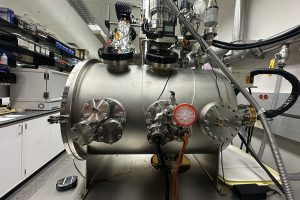
To visit Dr. Andrew Schuerger’s laboratory near the Kennedy Space Center is to visit the surface of Mars. His Mars simulation chamber mimics the conditions on the red planet – the soil, the temperature, the atmosphere. Samples placed inside the shiny, cylindrical chamber are blasted with UV radiation, cold temperatures and air composed primarily of carbon dioxide – conditions that seem inhospitable to life as we know it on Earth.
Schuerger, a research assistant professor with the UF/IFAS Department of Plant Pathology, began working on the chamber as soon as he joined the UF faculty in 2003. He had experience with Mars simulation chambers at Kennedy Space Center while working with NASA contractors.
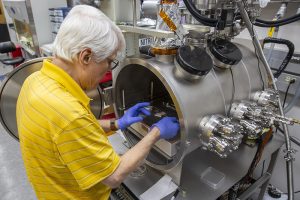
“I got to see a lot of the pros and cons of different designs and different sizes,” Schuerger said. “It was a pretty easy design process,” he said. “I took my sixth-grade shop skills and three-dimensional imaging in my mind, and sketched out a chamber.” Schuerger took those sketches and ideas to a mechanical engineer, and within a year, he had an operational simulation chamber.
On July 20, 1976—the seventh anniversary of the Apollo 11 moon landing—the spacecraft Viking 1 landed on the surface of Mars, marking the first successful landing of a human spacecraft on another planet. It was the first of nine successful NASA Mars landings—the Curiosity and Perseverance rovers are currently exploring the Martian surface. But landing a spacecraft on another planet means subjecting that planet to outside contamination.
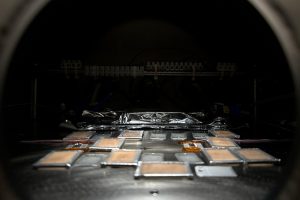
“NASA is very interested in protecting the scientific integrity of a target location,” said Schuerger. “If we send a rover or a lander to the Martian surface, we don’t want to immediately contaminate that local terrain.” Schuerger’s chamber helps determine what will happen to the contaminants spacecraft might bring, such as bacteria and fungi – known as “forward contamination.”
Schuerger’s research found that the UV radiation on Mars would eventually destroy any organism a spacecraft would introduce to the planet. However, some bacteria could survive and even grow under Martian conditions, “as long as they are protected from the UV, and they have a warm water source and a nutrient source,” Schuerger said. Even under those conditions, few species could survive and grow. “It’s probably 0.1 percent or even 0.01 percent,” Schuerger said. “But there are a few. And that gives us insights of how life might evolve and survive long-term on the surface of Mars.”
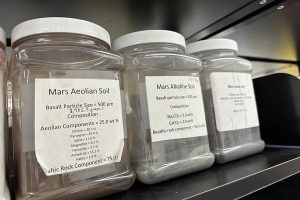
Knowing that bacteria had the potential to grow on Mars, Schuerger and colleagues set out to determine how those bacteria could evolve. “That means we’re providing water, nutrients, a stable environment and there’s no UV,” Schuerger said. When given the opportunity to grow, he said, bacteria would evolve through a series of steps. “They’re going along, barely eking out a life, and then there’s a mutation,” or a series of mutations, Schuerger explained . That bacteria will grow a little better and then reach a plateau, before mutating again. “It was clear evidence,” Schuerger said, “that bacteria on a spacecraft, if transported to Mars and if they find a very conducive environment to grow, that they might be able to survive, metabolize, grow, and potentially evolve on the planet.”
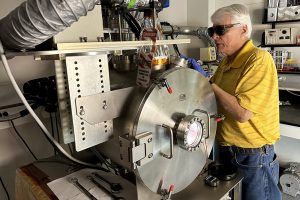 “What I find so fascinating about science is it’s a process of discovery,” Schuerger said. “You get to ask questions that maybe nobody else has ever asked before in the entire world. You get to figure something out and hopefully discover something that humanity as a species has never known about in the past. Discover a new form of life or discover a new process that’s never been done before. Or maybe, as it pertains to Mars, maybe actually discover the presence of an extraterrestrial form of life on the surface of Mars.” Schuerger said. “I mean, that’s just riveting to me to be able to do that.”
“What I find so fascinating about science is it’s a process of discovery,” Schuerger said. “You get to ask questions that maybe nobody else has ever asked before in the entire world. You get to figure something out and hopefully discover something that humanity as a species has never known about in the past. Discover a new form of life or discover a new process that’s never been done before. Or maybe, as it pertains to Mars, maybe actually discover the presence of an extraterrestrial form of life on the surface of Mars.” Schuerger said. “I mean, that’s just riveting to me to be able to do that.”
 5
5
